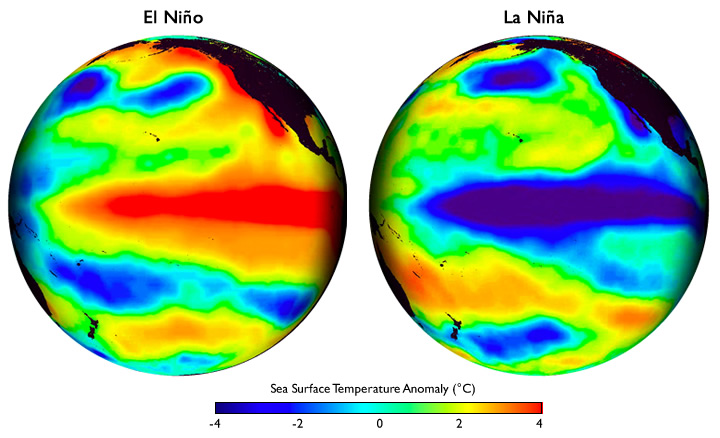In an effort to separate hype from science, Weather or Not’s meteorologists have closely examined the relationship between the 10 most recent Midwest winters and El Niño/ La Niña. In part 1, we’ll define the often misinterpreted phenomena.
 El Niño is characterized by unusually warm sea surface temperatures (SST) in the Equatorial Pacific Ocean. An increase in SST over a 3-month period greater than 0.5°C above the average temperature of the ocean is considered to be the minimum criterion for El Niño classification.
El Niño is characterized by unusually warm sea surface temperatures (SST) in the Equatorial Pacific Ocean. An increase in SST over a 3-month period greater than 0.5°C above the average temperature of the ocean is considered to be the minimum criterion for El Niño classification.
On the other hand, La Niña is described by uncharacteristically cool SST in the Equatorial Pacific Ocean. A decrease in SST over a 3-month time frame more than 0.5°C below the average temperature of the ocean is considered to be the minimum guideline for La Niña classification.
A Neutral cycle is considered to be any change in SST over a 3-month period within ±0.5°C of the average ocean temperature.
Even though El Niño and La Niña are SST patterns observed in the Pacific Ocean near the equator, they can have very real effects on the weather in the United States. With all of the hype about El Niño in the media right now, many of the real effects of an El Niño have been lost in translation or blown out of proportion.
In Part 2, we’ll separate fact from fiction as it relates to the assumptions you can reasonably make for your business this winter. The results might surprise you!


